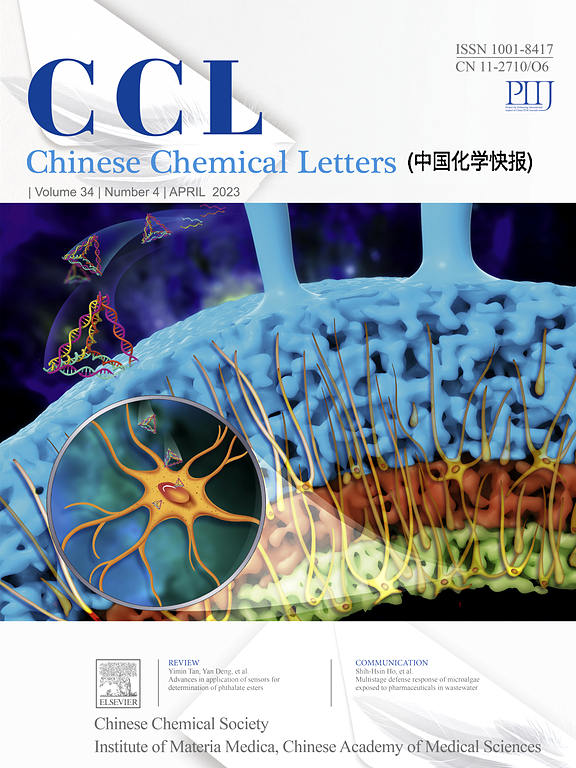Reinforced nitrogen fixation via synergistic Ru-Ni dual sites
IF 9.4
1区 化学
Q1 CHEMISTRY, MULTIDISCIPLINARY
引用次数: 0
Abstract
The electrocatalytic nitrogen reduction reaction (NRR) is challenging but crucial for the sustainable development of both industry and agriculture. To enhance NRR performance, it is critically important to construct advanced electrocatalysts that offer satisfactory performance containing high activity and selectivity. However, the strong affinity of nitrogen-containing species on the Ru surface resulted in suboptimal NRR activity. Herein, we propose a dual-site catalyst, RuNi, to optimize the binding strength, which leads to superior electrocatalytic performance, achieving a high NH3 yield rate of 5.07 µg h-1 cm-2 at -0.2 V vs. RHE and a Faradaic efficiency (FE) of 26.2 % at -0.1 V vs. RHE in 0.1 mol/L Na2SO4. Owing to the synergistic interaction between Ru and Ni, a remarkable performance is realized over the RuNi catalyst. In-situ characterization evidenced that hydrogen radicals (H*) on the Ni site of the RuNi catalyst participate in the dissociation of N2 adsorbed on the Ru site, and theoretical investigations indicated that RuNi reduces the adsorption strength of intermediates. This offers an effective approach to the synthesis of dual-site catalysts for electrocatalytic ammonia synthesis.

通过协同的Ru-Ni双位点加强固氮
电催化氮还原反应(NRR)具有挑战性,但对工农业的可持续发展至关重要。为了提高NRR的性能,构建具有高活性和选择性的高性能电催化剂至关重要。然而,含氮物种在Ru表面的强亲和力导致NRR活性不理想。在此,我们提出了一种双位点催化剂RuNi来优化结合强度,从而获得了优异的电催化性能,在-0.2 V / RHE条件下,NH3的产率高达5.07 µg h-1 cm-2,在-0.1 V / RHE条件下,在0.1 mol/L Na2SO4条件下,法拉第效率(FE)达到26.2 %。由于Ru和Ni之间的协同作用,在RuNi催化剂上实现了显著的性能。原位表征证明RuNi催化剂Ni位点上的氢自由基(H*)参与了吸附在Ru位点上的N2的解离,理论研究表明RuNi降低了中间体的吸附强度。这为电催化合成氨的双位点催化剂的合成提供了一条有效途径。
本文章由计算机程序翻译,如有差异,请以英文原文为准。
求助全文
约1分钟内获得全文
求助全文
来源期刊

Chinese Chemical Letters
化学-化学综合
CiteScore
14.10
自引率
15.40%
发文量
8969
审稿时长
1.6 months
期刊介绍:
Chinese Chemical Letters (CCL) (ISSN 1001-8417) was founded in July 1990. The journal publishes preliminary accounts in the whole field of chemistry, including inorganic chemistry, organic chemistry, analytical chemistry, physical chemistry, polymer chemistry, applied chemistry, etc.Chinese Chemical Letters does not accept articles previously published or scheduled to be published. To verify originality, your article may be checked by the originality detection service CrossCheck.
 求助内容:
求助内容: 应助结果提醒方式:
应助结果提醒方式:


